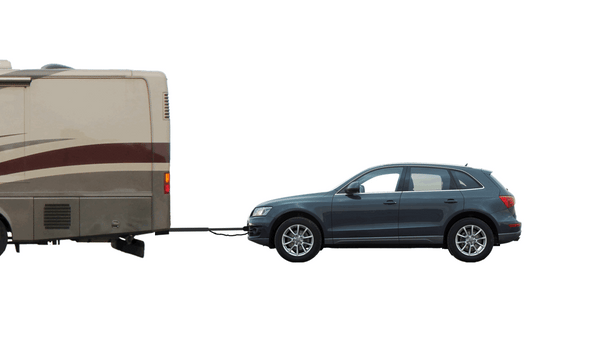"Wait?! Braking systems for flat towing are required by law?"
That's how most of us feel when something unexpected is required by law.
There are many reasons why braking systems are required, but before we go there, let's talk about RVing. Why do we do it?

The same is true for braking systems. When we look through the lens of our "why", the laws make more sense.
So, why are they required?
1) CATASTROPHIC HITCH FAILURE LEADING TO A BREAKAWAY
Years ago, a customer called in and told me he had to buy a braking system and buy it NOW. I was curious and asked about the emotion behind the call. He told me that he and his wife we flat towing their car in the hills of New Mexico, when his wife said, "Honey, that looks just like our car." And it WAS their car. It had become detached from the motorhome and they had to pull in front of it with the motorhome and let the car bash up against the back of the RV while they tried to slow it down so it didn't hurt anyone else.
Here's a video from our friends at "Wander to Get Lost" sharing their experience of towbar failure leading to a breakaway.
2) STOPPING DISTANCE IN A PANIC STOP

You may be able to get your foot on the brake pedal in time, but that doesn't mean you can slow down the RV PLUS the towed vehicle in time. RVs are loaded down with all of our gear, clothes, food, water, etc. They can barely stop themselves, then you add a 3,000-5,000 lb towed vehicle and now you've added up 75 feet in a panic stop. Here are the numbers:
For example: If your motorhome weighs 20,000 lbs. pulling a car weighing 3,800 lbs., that adds 10 feet of braking distance per 10 mph. Meaning if you're going 50 mph in this setup, it will add 50 ft to your braking distance. YIKES! 👀
3) COOLER AND MORE EFFICIENT BRAKING
 When going down long inclines, it's difficult to keep the brakes cool in the motorhome. RVibrake keeps the weight of the towed vehicle from pushing against the motorhome. Without the use of the RVibrake the towed vehicle increases the temperature of the motorhome brakes which can lead to expensive brake repairs and safety issues.
When going down long inclines, it's difficult to keep the brakes cool in the motorhome. RVibrake keeps the weight of the towed vehicle from pushing against the motorhome. Without the use of the RVibrake the towed vehicle increases the temperature of the motorhome brakes which can lead to expensive brake repairs and safety issues.








Will the brakes on the towed vehicle overheat on a steep incline
Would like to tow my 2018 jeep wrangler. What do you suggest i need to do this safety.
Leave a comment